Gardening is not just a hobby; it’s a way of connecting with nature and nurturing life. Did you know that vegetable gardening has been practiced for thousands of years? In fact, it dates back to ancient civilizations like the Egyptians and Romans, who cultivated and enjoyed the bounties of their own backyard gardens.
Today, the passion for growing our own food has experienced a resurgence, with more and more people embracing organic gardening, backyard gardening, and reaping the rewards of homegrown goodness. And in this comprehensive guide, I’ll take you on a journey through the mesmerizing world of garden peas, one of the most beloved and versatile vegetables you can grow in your own backyard.
Key Takeaways:
- Vegetable gardening has a rich history that spans back thousands of years, with ancient civilizations like the Egyptians and Romans cultivating their own backyard gardens.
- Gardening has experienced a resurgence, with more and more people embracing organic and backyard gardening.
- In this comprehensive guide, we will explore the fascinating world of garden peas and all the benefits and joys they bring.
- By the end of this journey, you will have the knowledge and confidence to successfully grow your own garden peas and enjoy the wonderful flavors of homegrown produce.
- So, let’s dig in and discover the ABCs of gardening and the wonders of garden peas!
Aspects of Gardening: Key Elements for Success
Successful gardening relies on paying attention to several key elements that contribute to the overall health and growth of your plants. To help your garden flourish, it’s crucial to focus on the following aspects: soil, sunlight, watering, and temperature.
Soil: The foundation of a healthy garden starts with the soil. For garden peas to thrive, they require well-draining soil that is rich in organic matter. Before planting, prepare the soil by loosening it and removing any debris or rocks. Adding compost or organic matter can enhance soil fertility, ensuring your plants have the nutrients they need to grow.
Sunlight: Just like humans, plants need sunlight to thrive. Garden peas require a minimum of 6-8 hours of direct sunlight each day. When planning your garden layout, consider the position of the sun throughout the day to ensure your plants receive adequate sunlight. If your garden has areas with limited sunlight, you may need to select shade-tolerant varieties of peas.
Watering: Proper watering is essential for the success of your garden peas. They prefer consistent moisture but can suffer from waterlogged conditions. Watering should be done deeply but infrequently, allowing the soil to dry out slightly between watering sessions. Avoid overwatering, as this can lead to root rot. Monitor the moisture level of the soil regularly to ensure optimal conditions for your plants.
Temperature: Garden peas have a preferred temperature range for optimal growth. Ideal temperatures range from 55°F to 70°F. They can tolerate cooler temperatures but may struggle in extreme heat. It’s important to time your planting based on the local climate and strive to provide a suitable temperature environment for your peas to thrive.
To summarize, providing the right soil conditions, adequate sunlight, proper watering, and maintaining suitable temperatures are key factors in ensuring the success of your garden peas. By addressing these essential gardening elements, you are setting the stage for healthy and productive plants.
In the next section, we will explore the benefits of growing garden peas and how they can enhance your gardening experience.
Benefits of Growing Garden Peas
Garden peas offer a multitude of benefits, making them a valuable addition to any vegetable garden. From their nutrient-rich composition to their role in soil enrichment and culinary versatility, garden peas bring both practical and flavorful advantages to the table. Additionally, their ability to thrive as companion plants further enhances their value in the garden.
Nutrient-Rich Composition
Garden peas are an excellent source of essential nutrients, making them a valuable addition to a healthy diet. Packed with vitamins A, C, and K, as well as iron and potassium, these peas provide a nutritious punch. Incorporating garden peas into your meals is an easy way to boost your nutrient intake and support overall well-being.
Soil Enrichment through Nitrogen Fixation
One of the significant benefits of growing garden peas is their ability to enrich the soil through nitrogen fixation. Peas belong to a group of plants called legumes that form a symbiotic relationship with specific bacteria in the soil. These bacteria take atmospheric nitrogen and convert it into a form that plants can use for growth. As garden peas grow, they release nitrogen into the soil, enhancing its fertility and benefiting other plants in the garden.
Culinary Versatility
Garden peas offer culinary versatility, allowing you to enjoy them in various ways. Freshly picked garden peas can be eaten right from the pod, providing a refreshing and nutritious snack. They can also be added to salads, stir-fries, soups, and pasta dishes, adding a burst of vibrant color and a sweet, delicate flavor. Whether enjoyed raw or cooked, garden peas elevate the taste and nutritional value of any dish.
Companion Planting
Garden peas are excellent companions for other plants in the garden. Companion planting is a gardening practice that involves strategically planting specific plants together to benefit one another. When garden peas are grown alongside other crops, they provide natural pest control, attract beneficial insects, and help improve soil health. Some recommended companion plants for garden peas include carrots, cucumbers, and corn, among others.
By cultivating garden peas in your vegetable garden, you not only reap the rewards of their nutrient-rich composition and culinary versatility but also contribute to the overall health and vitality of your garden through soil enrichment and companion planting.
Cultivating Garden Peas: Varieties and Preparation
When it comes to garden peas, there are three main varieties to consider: English peas, snow peas, and sugar snap peas. Each variety has its distinguishing characteristics and culinary uses, making them an excellent addition to any vegetable garden.
English peas, also known as shelling peas, are prized for their plump, sweet peas that need to be removed from the pod before consumption. Snow peas, on the other hand, are enjoyed for their tender, edible pods, while the peas inside are still underdeveloped. Sugar snap peas offer the best of both worlds, with crunchy pods and sweet, juicy peas inside.
Before planting your garden peas, it’s essential to prepare the soil properly. Start by loosening the soil with a garden fork or tiller, breaking up any clumps and removing debris or rocks. This will create a loose and well-draining soil environment that encourages proper root growth.
To enhance the fertility of the soil, consider adding compost or organic matter. This will provide essential nutrients for your garden peas, ensuring healthy development and abundant yields. Organic matter also helps improve soil structure and water retention capabilities, promoting optimal growth and reducing the risk of waterlogged conditions.
By giving your garden peas a well-prepared soil foundation, you’ll be setting them up for success in their journey from seed to harvest.
Watering and Care Tips for Garden Peas
Garden peas require consistent and adequate watering to thrive. It is essential to keep the soil moist, but not waterlogged, as excessive water can cause root rot and hinder the growth of the plants. Regularly check the moisture level of the soil by inserting your finger into the ground. If it feels dry up to the first knuckle, it’s time to water.
Support systems like stakes or trellises are beneficial for climbing varieties of garden peas. These structures provide vertical support, allowing the plants to grow upward and maximize space utilization. Sturdy stakes or trellises can be placed in the ground, and the pea plants can be tied to them as they grow. This ensures that the plants have sufficient support and prevents them from sprawling on the ground.
Mulching plays a vital role in the care of garden peas. Apply a layer of organic mulch, such as straw or wood chips, around the base of the plants. Mulching helps retain moisture in the soil, reducing the frequency of watering and preventing weed growth. It also acts as an insulator during temperature fluctuations, protecting the roots of the plants.
When it’s time to harvest, it’s important to know the right stage for each variety of garden peas. English peas should be harvested when the pods are plump and filled. Snow peas and sugar snap peas, on the other hand, are best harvested when the pods are flat and the peas inside are tender. Regular harvesting promotes continuous production and ensures the best flavor and texture.
To summarize, here are the key watering and care tips for garden peas:
- Water consistently, keeping the soil moist but not waterlogged.
- Use stakes or trellises for climbing varieties to provide support.
- Mulch around the plants to retain moisture and suppress weeds.
- Harvest English peas when pods are plump and filled, and snow peas and sugar snap peas when pods are flat and peas are tender.
By following these tips, you can ensure the healthy growth and bountiful harvest of your garden peas.
Starting Your Organic Gardening Journey
Embarking on the path of organic gardening is a rewarding endeavor that allows you to cultivate a thriving, sustainable garden while minimizing harm to the environment. By adopting natural methods and embracing the principles of composting and sustainable practices, you can create a garden that flourishes with health and vitality.
One of the cornerstones of organic gardening is composting, which involves the decomposition of organic materials like kitchen scraps, yard waste, and fallen leaves. Composting not only reduces waste but also produces nutrient-rich compost that nourishes the soil, promoting optimal plant growth and vitality.
“Composting is nature’s way of recycling and rejuvenating the Earth.”
Compost improves soil structure, moisture retention, and nutrient availability, while also fostering beneficial soil microorganisms. By incorporating compost into your garden beds, you can create a rich and fertile environment that supports the growth of healthy plants.
Organic gardening also prioritizes sustainable practices, aiming to minimize the use of synthetic chemicals and artificial fertilizers. Instead, natural alternatives like organic fertilizers, beneficial insects, and companion planting are embraced to promote plant health and protect the ecosystem.
- Organic fertilizers derived from natural sources, such as bone meal, fish emulsion, and seaweed extract, provide essential nutrients without the harmful effects of synthetic chemicals.
- Beneficial insects, such as ladybugs and praying mantises, can help control pests without the need for chemical pesticides.
- Companion planting, the strategic placement of compatible plants, can enhance pest control, improve soil fertility, and maximize garden space utilization.
By incorporating these sustainable practices into your gardening routine, you not only contribute to the health and well-being of your garden but also promote a harmonious balance with nature.
Nutrient Content of Common Organic Fertilizers
| Fertilizer | Nitrogen (N) | Phosphorus (P) | Potassium (K) |
|---|---|---|---|
| Bone Meal | 3-15% | 15-27% | 0-0.5% |
| Fish Emulsion | 4-5% | 1-2% | 1-4% |
| Seaweed Extract | 0.1-5% | 0.1-3% | 2-18% |
Table: Nutrient Content of Common Organic Fertilizers
As you embark on your organic gardening journey, embrace the transformative power of composting and sustainable practices. By nurturing your garden in harmony with nature, you’ll create a vibrant and flourishing oasis of green that will bring you joy and satisfaction for years to come.
Designing Your Garden Layout
When it comes to creating a beautiful and functional garden, the layout plays a crucial role. A well-designed garden layout ensures efficient use of space, optimal plant growth, and a visually pleasing arrangement. To achieve a successful garden layout, it’s important to consider factors such as sunlight, accessibility, and companion planting.
Planning for Success
Before diving into the design process, take time to envision your dream garden. Consider the purpose of your garden and what plants you want to grow. Keep in mind the size of your garden space and any specific requirements of the plants you choose. This planning phase will guide your design decisions and help you optimize your garden layout.
Space Optimization
Maximizing the use of space is essential, especially if you have a small garden or limited mobility. Raised beds and container gardening are great options for maximizing space. These methods allow you to grow plants vertically, making the most of your available area. Additionally, vertical structures like trellises and arbors can provide support for climbing plants, while still allowing for ground-level planting.
Companion Planting for Harmony
Companion planting is the practice of growing compatible plants together to benefit each other. By strategically arranging plants with complementary characteristics, you can enhance growth and protect against pests or diseases. For example, planting herbs near vegetable crops can deter pests, while certain flowers attract beneficial insects. Research companion planting combinations that will optimize your garden’s health and productivity.
To inspire you further, take a look at this visually appealing and informative table showcasing different garden layout designs:
| Garden Layout | Description |
|---|---|
| Traditional Rows | A classic layout with straight rows, allowing easy access for maintenance and harvesting. |
| Square Foot Gardening | A grid-based layout that divides the garden into square-foot sections for efficient use of space. |
| Companion Planting Beds | Specific beds designed for companion planting combinations, promoting plant health and preventing pests. |
| Keyhole Garden | A circular layout with a composting center, providing easy access and efficient use of resources. |
| Vertical Garden | A layout utilizing vertical structures like trellises, maximizing space and creating an aesthetically pleasing display. |
Choosing the right garden layout depends on your preferences, available space, and specific garden goals. Experiment with different designs and adapt them to suit your needs. Remember, a well-planned garden layout sets the stage for a successful and bountiful harvest.
Importance of Fertilizing for Plant Health
Fertilizing plays a critical role in maintaining the health and vitality of your plants. By providing essential nutrients, fertilizers ensure that plants have everything they need to grow, thrive, and produce an abundant harvest. Understanding nutrient deficiencies and utilizing organic options are key to promoting optimal plant growth and productivity.
Recognizing Nutrient Deficiencies
As a gardener, it’s essential to be able to identify nutrient deficiencies in your plants. Leaves that are yellowing, stunted growth, and poor fruit or flower production are common signs of nutrient deficiencies. By recognizing these symptoms, you can take action to address the specific nutrient needs of your plants.
Evaluating the health of your plants and identifying nutrient deficiencies is crucial for providing targeted fertilization and ensuring their overall well-being.
Choosing Organic Fertilizers
Organic fertilizers are an excellent choice for nurturing your plants and maintaining soil fertility. These fertilizers are derived from natural sources, such as compost, manure, and plant-based materials. They release nutrients slowly and are less likely to cause harm to the environment.
In comparison to synthetic fertilizers, organic options offer long-term benefits by improving soil structure, promoting beneficial microbial activity, and reducing the risk of nutrient imbalances. By opting for organic fertilizers, you can nurture your plants with sustainable and environmentally-friendly practices.
Balance Macronutrients and Micronutrients
Achieving a balance of macronutrients and micronutrients is crucial for optimal plant growth. Macronutrients are nutrients that plants require in larger quantities, such as nitrogen (N), phosphorus (P), and potassium (K). Micronutrients, on the other hand, are needed in smaller amounts but are equally essential for overall plant health.
It’s important to choose a fertilizer that provides a balanced combination of macronutrients and micronutrients. This ensures that your plants receive a complete and well-rounded nutrient profile, enabling them to thrive in all stages of growth.
The Importance of Timing
Timing is key when it comes to fertilizing your plants. Fertilizers should be applied at the right time to maximize their effectiveness. Typically, it’s best to fertilize early in the growing season, just before or during planting. This allows the nutrients to be readily available to the plants as they begin their growth.
Regular fertilization throughout the growing season can also help replenish nutrient levels and sustain plant health. Be sure to follow the recommended application rates and schedules provided by the fertilizer manufacturer.
To illustrate the importance of fertilizing for plant health, consider the table below, which highlights the impact of nutrient deficiencies on different types of plants:
| Plant Type | Nutrient Deficiency Symptoms |
|---|---|
| Tomatoes | Yellowing leaves, weak stems, poor fruit development |
| Carrots | Stunted growth, deformed roots |
| Roses | Pale leaves, reduced blooms |
Fertilizing your plants is a fundamental aspect of successful gardening. By understanding nutrient deficiencies, choosing organic options, and maintaining a balance of macronutrients and micronutrients, you can ensure the health and vigor of your plants. Remember to follow proper timing and application guidelines to achieve the best results.
The Benefits of Mulching in Your Garden
Mulching is an essential practice that offers numerous benefits for your garden. Not only does it enhance the overall aesthetics, but it also plays a vital role in weed control, moisture retention, and temperature regulation. Organic mulches, such as straw or wood chips, can even improve soil fertility as they break down over time.
One of the primary advantages of mulching is its ability to suppress weeds. By creating a barrier between the soil and the air, mulch prevents weed seeds from receiving the light they need to germinate. This natural weed control method saves you time and effort typically spent on tedious weeding, allowing you to focus on the growth and care of your plants.
In addition to weed control, mulching helps retain moisture in the soil. The layer of mulch acts as a protective barrier, reducing water evaporation by shielding the soil from direct sunlight and wind. This moisture retention is especially crucial during hot summer months or in regions with limited rainfall. By conserving moisture, mulch ensures that your plants have a consistent water supply, promoting healthy growth and reducing the need for frequent watering.
Furthermore, mulching plays a role in regulating soil temperature. In the scorching heat or freezing cold, mulch acts as an insulation blanket for the soil, preventing temperature extremes that can stress plants. By maintaining a more stable soil temperature, mulch provides a comfortable environment for roots to thrive and protects them from damage caused by rapid temperature fluctuations.
“Mulching not only enhances the overall aesthetics of your garden but also plays a vital role in weed control, moisture retention, and temperature regulation.”
To demonstrate the benefits of mulching, consider the following table:
| Mulching Benefits | Description |
|---|---|
| Weed Control | Prevents weed growth by blocking sunlight, reducing the need for manual weeding and herbicides. |
| Moisture Retention | Helps retain soil moisture by minimizing evaporation, ensuring plants have a constant water supply. |
| Temperature Regulation | Acts as an insulating layer to stabilize soil temperature, protecting plant roots from extreme heat or cold. |
| Soil Fertility | Organic mulches gradually break down, enriching the soil with nutrients and improving overall fertility. |
As you can see, mulching provides multiple benefits that contribute to the overall health and productivity of your garden. Whether you choose straw, wood chips, or another organic mulch, incorporating this practice into your gardening routine can have a significant impact on the success of your plants.
Conclusion
By following the ABCs of gardening and implementing the tips and techniques shared in this gardening guide, you can achieve garden success and enjoy the flourishing growth of your plants. Whether you are a seasoned gardener or just starting out, organic gardening offers a rewarding experience that nourishes both you and the environment.
With proper soil preparation, adequate sunlight, regular watering, and care, your garden peas will thrive in the nutrient-rich soil. The benefits of growing garden peas extend beyond their culinary versatility; they also enrich the soil through nitrogen fixation and make excellent companions for other plants in your garden.
Embrace the joy of organic gardening and witness your garden transform into a vibrant oasis. By applying the knowledge and techniques from this gardening guide, you can create a beautiful garden filled with flourishing plants, bringing you closer to nature and the bounties it provides.

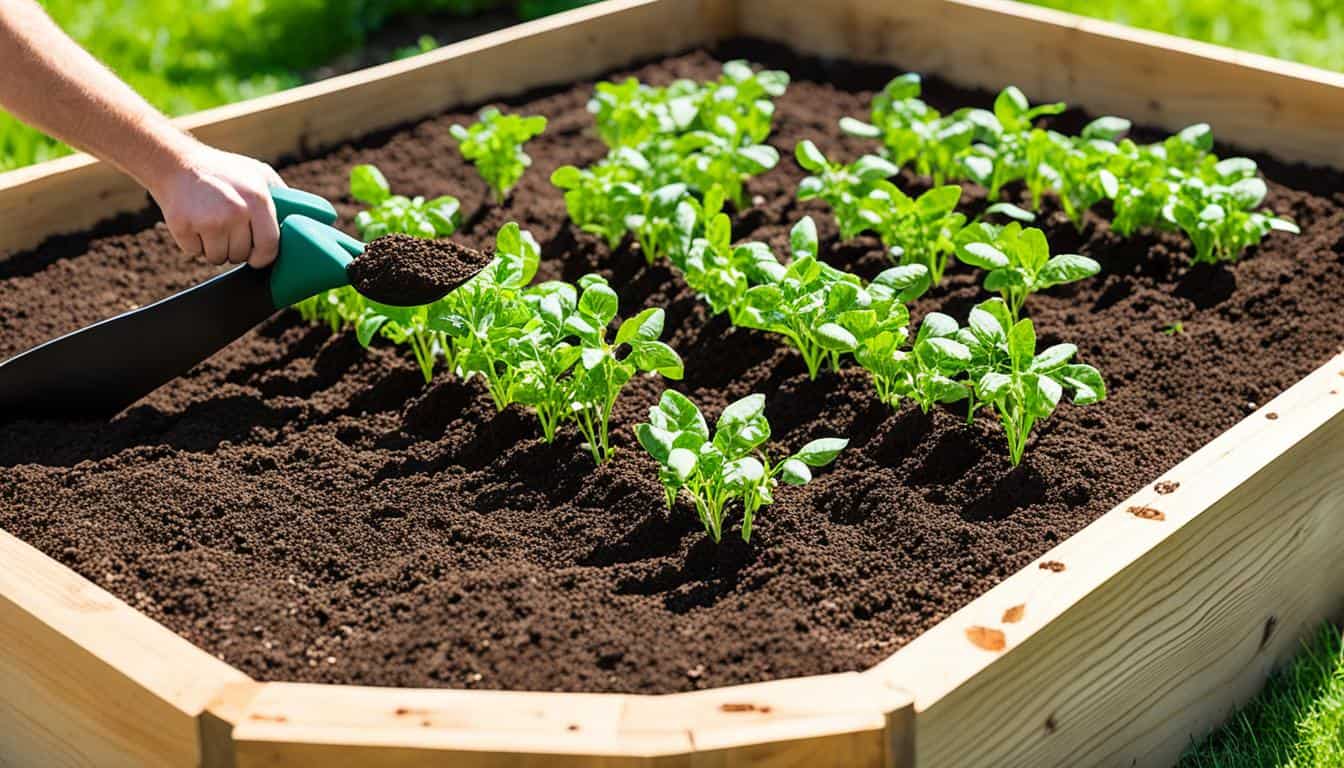
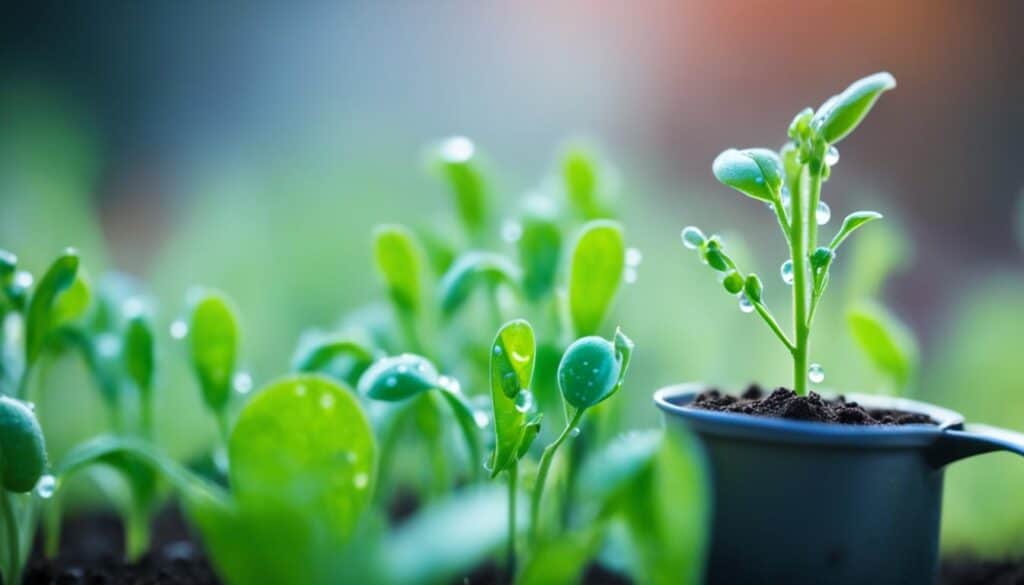


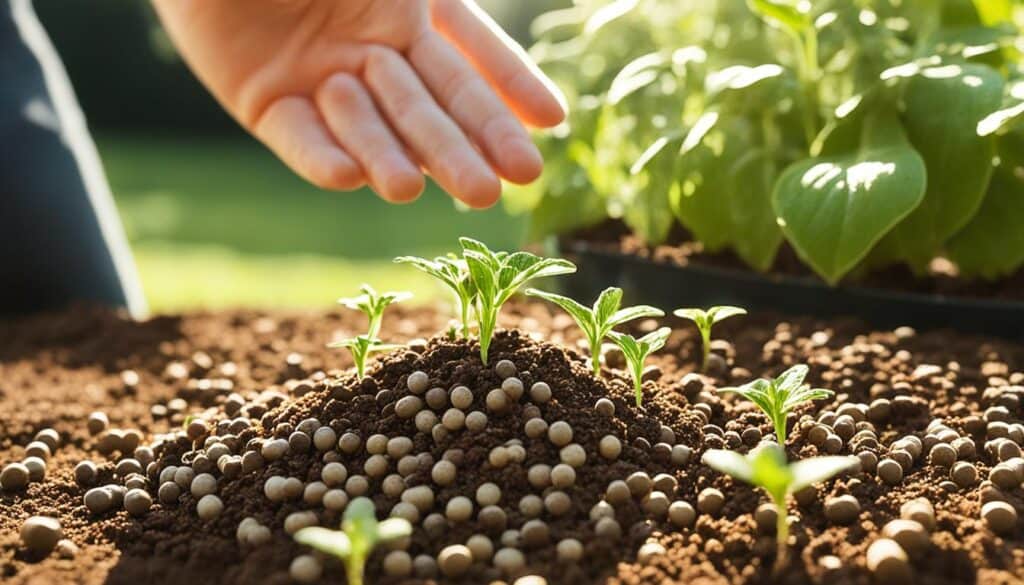
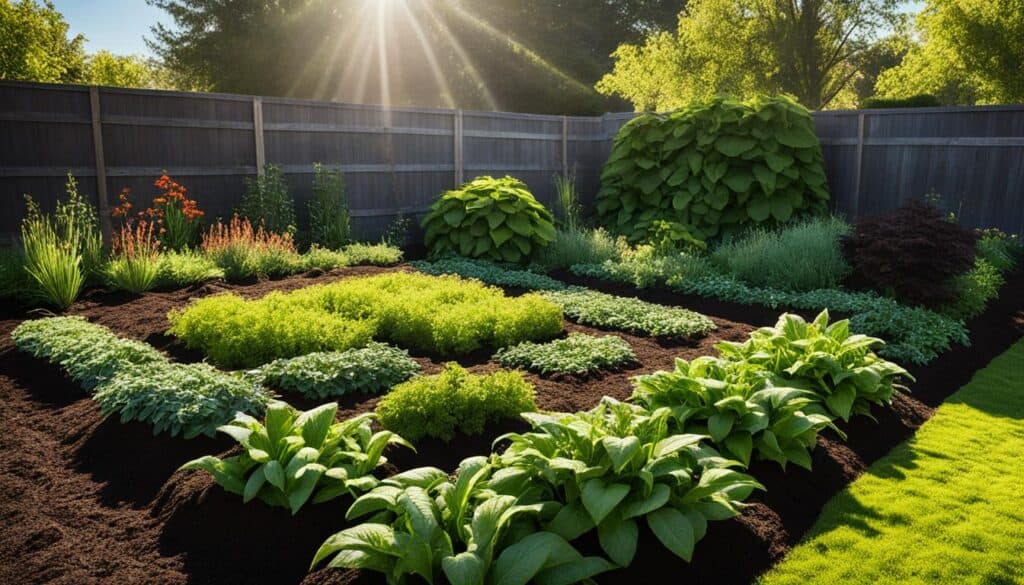
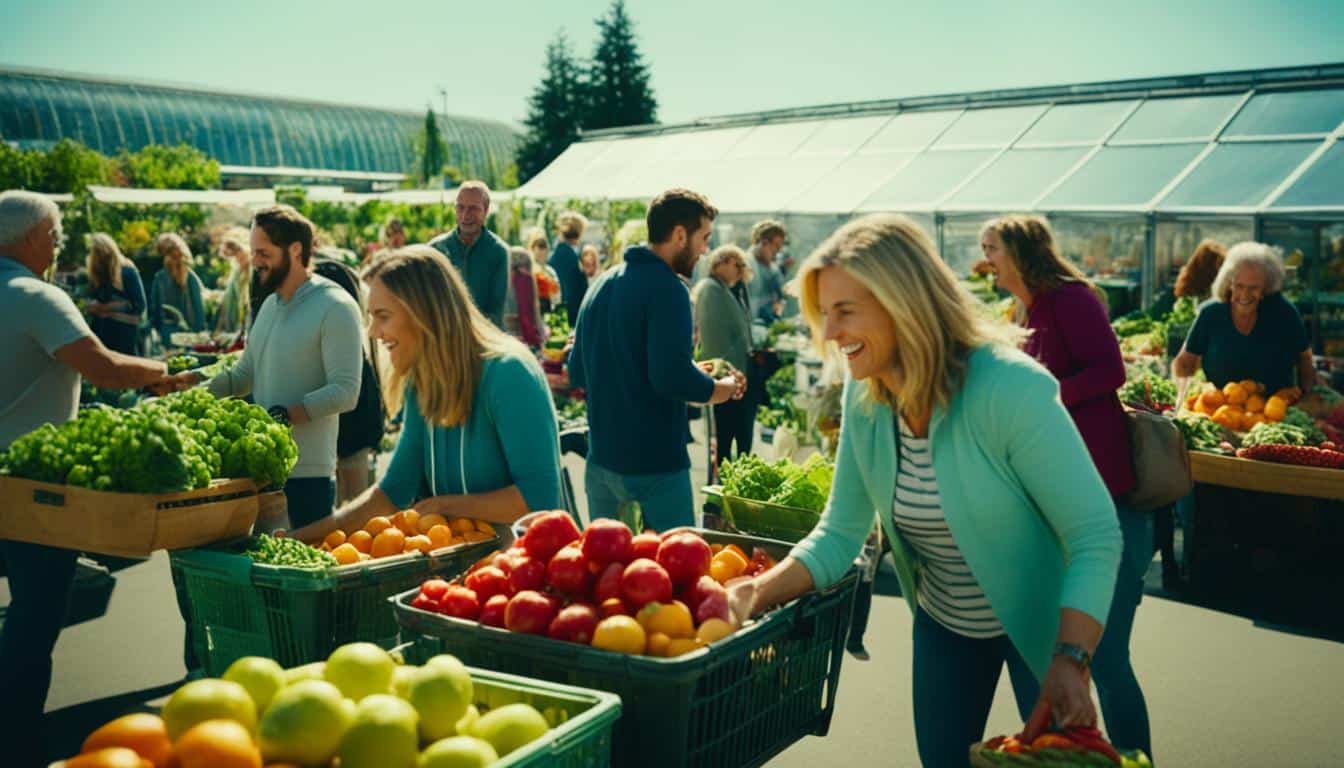
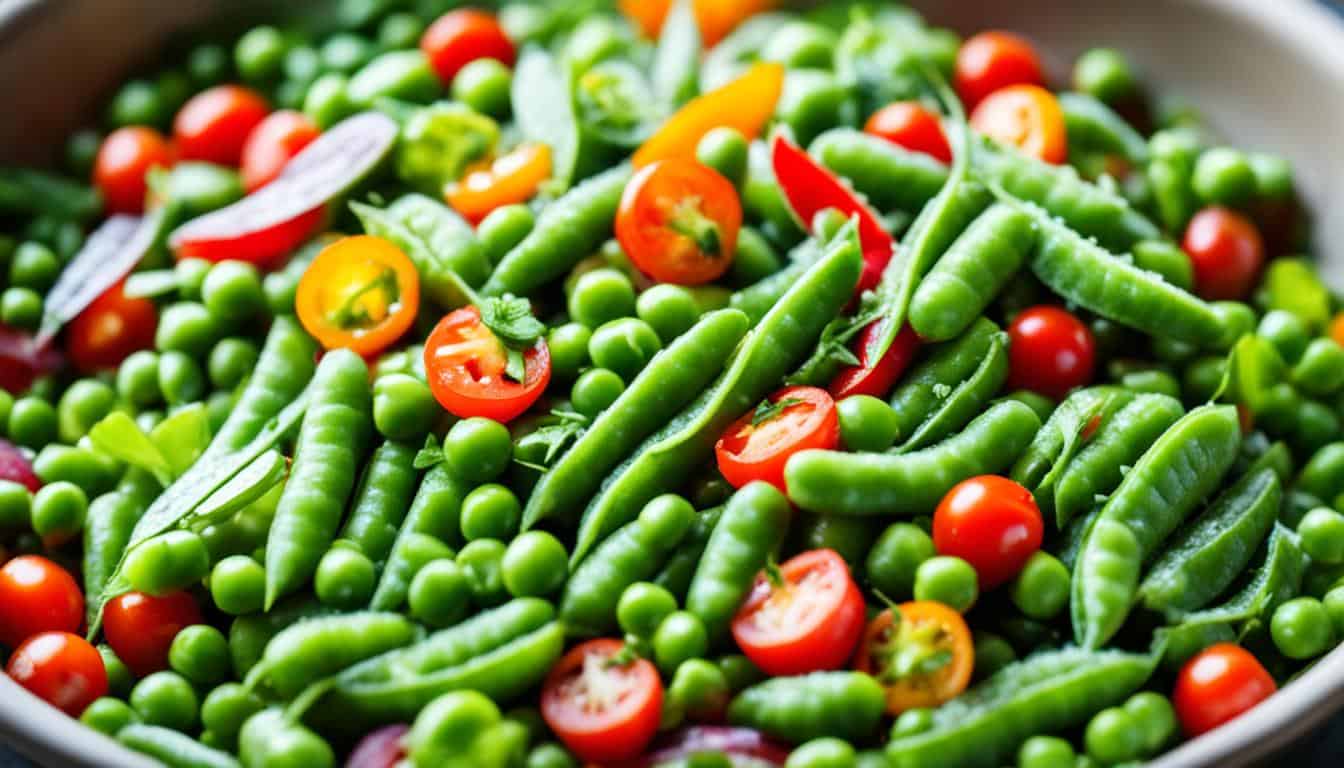
Leave a Reply